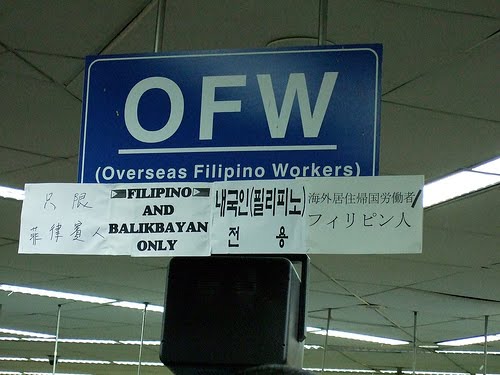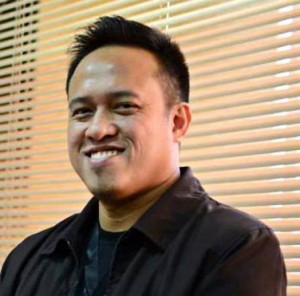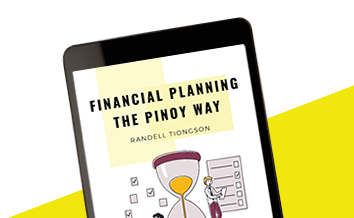2015 Outlook, part 11
By Randell Tiongson on February 2nd, 2015
40 years ago, the Philippines grows below the 3% range… we have gone a long way since then and we are no longer the ‘sick man of Asia’. What are the macroeconomic concerns we should address to ensure sustainability of our growth? Can we survive international economic shocks? Are we a viable international investment destination?
I am proud to present the views of my mentor in economics and a highly respected and admired economist, Dr, Alvin P. Ang, PhD.
The 2015 Outlook of Dr. Alvin Ang
2014 saw a natural experiment in terms of Philippine economic growth. It showed that if government and agriculture will not contribute to the economy, what will be the growth of the Philippines? It proved our expectations that the Philippines is already in a higher growth path. We are now growing at above 5.5% at base case. This is far higher than the below 3% growth we have experienced in the last 40 years. This alone is good news for all of us! It validates that the Philippines is now in a new league far from the sick man of Asia tag we had in the past.
 Let us just look at what happened to the economy after the major Swiss Shock weeks ago. We find that instead of being pulled down, the peso held on at current levels and the stock market even breach new highs. What is happening is that there is a whole new view about the Philippine economy. We are being looked as an alternative investment destination because of our unique qualities not found in other emerging market economy. These distinct advantages that may help cushion and compensate for any ripples and shocks. Let me summarize them as follows: a) the Investment Upgrade. At present we have yet to benefit fully from this as our FDI has remained low compared to our ASEAN neighbors. However, slowly we are seeing additions. FDI most likely reached USD 6Bn in 2014 and at base scenario would remain the same. B) OFW remittances and BPO. Supporting FDI for inflows will be the remittances and BPO contribution. While remittances are reaching growth maturities of about 4 to 6% growth per year, the BPO sector is strongly testing 2/3 of total remittances. All of these combined will already add a steady stream of close to USD 50 Bn per year. During the 2009 crisis, we were shielded mainly by the wide distribution of OFWs around the world compensating for the weakness in Taiwan and the Middle East. Hence, the economy held on despite massive shocks. This time, the Philippines is in a better position structurally because of the stronger underlying and the contributions of the Investment Grade status and the BPOs.
Let us just look at what happened to the economy after the major Swiss Shock weeks ago. We find that instead of being pulled down, the peso held on at current levels and the stock market even breach new highs. What is happening is that there is a whole new view about the Philippine economy. We are being looked as an alternative investment destination because of our unique qualities not found in other emerging market economy. These distinct advantages that may help cushion and compensate for any ripples and shocks. Let me summarize them as follows: a) the Investment Upgrade. At present we have yet to benefit fully from this as our FDI has remained low compared to our ASEAN neighbors. However, slowly we are seeing additions. FDI most likely reached USD 6Bn in 2014 and at base scenario would remain the same. B) OFW remittances and BPO. Supporting FDI for inflows will be the remittances and BPO contribution. While remittances are reaching growth maturities of about 4 to 6% growth per year, the BPO sector is strongly testing 2/3 of total remittances. All of these combined will already add a steady stream of close to USD 50 Bn per year. During the 2009 crisis, we were shielded mainly by the wide distribution of OFWs around the world compensating for the weakness in Taiwan and the Middle East. Hence, the economy held on despite massive shocks. This time, the Philippines is in a better position structurally because of the stronger underlying and the contributions of the Investment Grade status and the BPOs.
Furthermore monetary policy has been prudent with liquidity growth back to single digit levels and the loan growth at 20%. What is more encouraging is that loans to production have diversified to more sectors than before assuring a more balanced production growth. With these conditions, it is very likely that local interest rates will be hovering lower than their current levels. This is more so because we see inflation to weakening to even below 2% at best scenario. Best scenario assumes that the current oil price levels continue to weaken by ½% per month and that the port congestion is responded at a much faster rate than current. As regards the peso-dollar rate, the short term will see volatilities, but the general direction is that of a weakening considering that the US economy has been rebounding at a sustained pace. This will most likely lead to a tightening of US interest rates within the year. A higher US interest rates may attract funds back to the US. But this is a question of flight to quality. The Philippines is no longer a junk grade economy so it will not necessarily lead to a lot of funds moving out. Besides, the strong compensatory effect of the unique feature of our economy will ensure that any depreciation will be mild and will be helpful to make our exports competitive – this will be a movement between 1% to 2.5%.
As regards equities, 2014 saw a banner year with the PSEi hitting more than 20% return. The concern is that if the earnings will remain at their current levels, we will be expensive compared with our neighbours. For the last 3 years (2011-2014), the Philippines was the 13th best performing equities market in the world. There is still room to go up considering that current PE levels of 20% is well within the 20 year average. Hence, we see the PSEi moving up by 5% at base scenario to 7,600 and a maximum of 10% at 8,000.
Alvin Ang is presently Senior Fellow of Eagle Watch, Economic Forecasting Unit of Ateneo de Manila University and  Professor of Economics at the same university. He was the 2013 President of the Philippine Economic Society and was previously Professor and Director of Social Research at University of Santo Tomas. He advocates personal finance as one of the key missing links to address serious inequalities in the country.
Professor of Economics at the same university. He was the 2013 President of the Philippine Economic Society and was previously Professor and Director of Social Research at University of Santo Tomas. He advocates personal finance as one of the key missing links to address serious inequalities in the country.
2015 Outlook, part 10
By Randell Tiongson on February 1st, 2015
One of the big reasons why the Philippine economy remains to be in a positive track is because of the enormous remittances that our OFW heroes are sending home month after month. In 2014, the remittances exceeded $25 Billion and we are not expecting that to slow down anytime soon.
For this installation of the 2015 Outlook, I am featuring the views of an OFW himself, Burn Gutierrez. Burn is one of the driving force behind the increasing financial literacy of the OFW’s through his vast network of OFW’s world-wide. He is the founder of the OFW Usapang Piso, an on-line group that has over 33,000 members world-wide. An accountant by profession, he envisions seeing the OFW as financially enabled in the near future.
The 2015 Outlook of OFW Usapang Piso’s Burn Gutierrez
The year 2014 has been a year of new opportunities and challenges for OFWs especially in the Middle East. In Saudi Arabia, we saw thousands of undocumented OFWs or those whose visa sponsorships has either expired and have not been renewed by their respective employers repatriated to the Philippines.
 There have also been a significant decrease in the number of OFWs in Saudi Arabia while more Filipinos have emigrated to Canada or the USA according to the statistics provided by the Commission on Filipinos Overseas. This could mean that many OFWs still view North America as the ultimate continent to immigrate to. I believe this migration trend will still continue this year.
There have also been a significant decrease in the number of OFWs in Saudi Arabia while more Filipinos have emigrated to Canada or the USA according to the statistics provided by the Commission on Filipinos Overseas. This could mean that many OFWs still view North America as the ultimate continent to immigrate to. I believe this migration trend will still continue this year.
Interestingly, BSP’s recent survey revealed that more Filipinos abroad and their families back home are allocating their remittances for savings and investments. The survey showed that OFW’s families savings increased to 42.1% in the last quarter of 2014 from the 39.7% in the previous quarter. Funds for investments also increased from 6.3% to 6.8%.
I would like to note and give credit to this development to a handful of financial literacy advocates and investment personalities who are gaining popularity on Filipino households abroad because of their exposure in Philippine TV shows streamed abroad by GMA PinoyTV, The Filipino Channel, and AksyonTV.
Another venue that will continue to aid the learning journey of OFW’s is the social media, especially the growing number of Facebook groups and pages that aim to educate Filipinos about paying consumer debts, saving for emergencies, insuring themselves, and investing in paper assets in addition to promoting traditional entrepreneurship. More OFW’s are starting to get information about affordable investing through the these social media groups and non-profit organizations online.
While this development do sound favorable, throngs of fraud schemes and online scams will still go after the hard-earned money of many OFW’s and their dependents this year. In the same manner, the combined vigilant effort of government agencies and non-profit organizations will help in identifying and fighting these scams.
The year 2015 will be a great year for many Filipinos to start their own businesses in the Philippines. Our OFW’s will realize this urgency considering the continuous falling of oil prices that may affect their current work overseas, most especially those who are working in the Middle East and the Americas. OFW’s should have this alternative plan while they still have their contract live in their respective countries of work.
Burn Gutierrez is an accountant and auditor based in Al Khobar in the Kingdom of Saudi Arabia. He is the founder  of the OFW Usapang Piso Facebook group and the Angat Pilipinas Coalition. Through his efforts, OFWs all over the world are becoming financially aware. His extensive experience in the auditing and finance has equipped him to help the plight of the OFW’s achieve financial freedom.
of the OFW Usapang Piso Facebook group and the Angat Pilipinas Coalition. Through his efforts, OFWs all over the world are becoming financially aware. His extensive experience in the auditing and finance has equipped him to help the plight of the OFW’s achieve financial freedom.
2015 Outlook, part 9
By Randell Tiongson on January 23rd, 2015
Interest rates, heightened geopolitical risks, global growth and many other factors will have an effect on 2015 and yet, Riza Mantaring, the CEO of the country’s number 1 life insurance company (Sun Life) feels that Philippine outlook is still positive. Ms. Mantaring’s company has been in the forefront of getting Filipinos financially abled and she views that there is still a lot to be done.
The 2015 Outlook of Riza Mantaring
Giving an outlook for the year almost seems like a shot in the dark given how wrong most people were last year — equities market expected to be slow in anticipation of higher interest rates and a global slowdown, but the PSEi ended the year up 22.8% and close to its all-time high; US interest rates expected to be up with the end of quantitative easing, but ended the year much lower; Philippine treasuries expected to move past 5% but ended at 4.5%; oil prices hit an all-time high mid-year at $107/barrel but ended at $53, a price not seen in years.
Again, this year, interest rates are expected to move up, and heightened geopolitical risks and global growth dragged by Europe and China may cause some volatility, but for the Philippines, our outlook is quite positive. Abundant liquidity, lower oil prices, and a slightly weaker currency will all contribute to strong domestic consumption. Aside from this, anticipation of election spending and increased government spending on infrastructure and public works can all contribute to higher GDP.
 Riza is a member of the Sun Life Asia Executive Team. She has also participated in various international special projects and teams such as the task force for worldwide restructuring of the company, the task force for business processes, and special teams for Mergers & Acquisitions.
Riza is a member of the Sun Life Asia Executive Team. She has also participated in various international special projects and teams such as the task force for worldwide restructuring of the company, the task force for business processes, and special teams for Mergers & Acquisitions.
In 2010, on the occasion of the 100th anniversary of the University of the Philippines College of Engineering, she was selected one of the 100 Most Outstanding Alumni of the past century. In 2011, she was named by Moneysense Magazine one of the 12 Most Influential in Personal Finance. She is also a recipient of the 2011 CEO EXCEL award given by the International Association of Business Communicators. Riza was recognized for bold and innovative programs anchored on a five year strategy, “Route 5”, and harnessing the power of communication to implement these programs, including the multi-awarded and pioneering “It’s Time!” financial literacy advocacy. The strategies and programs put in place have resulted in unprecedented growth for Sun Life in sales, assets under management, and provincial presence.
In February 2011, the company announced the acquisition of 49% of Grepalife Financial Inc, creating Sun Life Grepa Financial and opening up the bancassurance channel for Sun Life.
Riza graduated with a B.S. Electrical Engineering degree (cum laude) from the University of the Philippines, and an M.S. Computer Science from the State University of New York at Albany. She has also attended numerous executive development programs conducted by Harvard University, The Wharton School, Duke University, Oxford University, Asian Institute of Management, and The Niagara Institute. She is a Fellow of the Life Management Institute (with distinction).
She was a board director of the Philippine Life Insurance Association from 2011-2013, serving as Secretary in 2012 then Treasurer in 2013. She served as a board director of the Philippine Federation of Pre-need Companies from 2006-2008.
Riza also serves as an independent director of Ayala Land Inc., the country’s largest real estate firm, and Microventures Foundation Inc., which runs the Hapinoy social entrepreneurship program.
 Let us just look at what happened to the economy after the major Swiss Shock weeks ago. We find that instead of being pulled down, the peso held on at current levels and the stock market even breach new highs. What is happening is that there is a whole new view about the Philippine economy. We are being looked as an alternative investment destination because of our unique qualities not found in other emerging market economy. These distinct advantages that may help cushion and compensate for any ripples and shocks. Let me summarize them as follows: a) the Investment Upgrade. At present we have yet to benefit fully from this as our FDI has remained low compared to our ASEAN neighbors. However, slowly we are seeing additions. FDI most likely reached USD 6Bn in 2014 and at base scenario would remain the same. B) OFW remittances and BPO. Supporting FDI for inflows will be the remittances and BPO contribution. While remittances are reaching growth maturities of about 4 to 6% growth per year, the BPO sector is strongly testing 2/3 of total remittances. All of these combined will already add a steady stream of close to USD 50 Bn per year. During the 2009 crisis, we were shielded mainly by the wide distribution of OFWs around the world compensating for the weakness in Taiwan and the Middle East. Hence, the economy held on despite massive shocks. This time, the Philippines is in a better position structurally because of the stronger underlying and the contributions of the Investment Grade status and the BPOs.
Let us just look at what happened to the economy after the major Swiss Shock weeks ago. We find that instead of being pulled down, the peso held on at current levels and the stock market even breach new highs. What is happening is that there is a whole new view about the Philippine economy. We are being looked as an alternative investment destination because of our unique qualities not found in other emerging market economy. These distinct advantages that may help cushion and compensate for any ripples and shocks. Let me summarize them as follows: a) the Investment Upgrade. At present we have yet to benefit fully from this as our FDI has remained low compared to our ASEAN neighbors. However, slowly we are seeing additions. FDI most likely reached USD 6Bn in 2014 and at base scenario would remain the same. B) OFW remittances and BPO. Supporting FDI for inflows will be the remittances and BPO contribution. While remittances are reaching growth maturities of about 4 to 6% growth per year, the BPO sector is strongly testing 2/3 of total remittances. All of these combined will already add a steady stream of close to USD 50 Bn per year. During the 2009 crisis, we were shielded mainly by the wide distribution of OFWs around the world compensating for the weakness in Taiwan and the Middle East. Hence, the economy held on despite massive shocks. This time, the Philippines is in a better position structurally because of the stronger underlying and the contributions of the Investment Grade status and the BPOs. Professor of Economics at the same university. He was the 2013 President of the Philippine Economic Society and was previously Professor and Director of Social Research at University of Santo Tomas. He advocates personal finance as one of the key missing links to address serious inequalities in the country.
Professor of Economics at the same university. He was the 2013 President of the Philippine Economic Society and was previously Professor and Director of Social Research at University of Santo Tomas. He advocates personal finance as one of the key missing links to address serious inequalities in the country.



